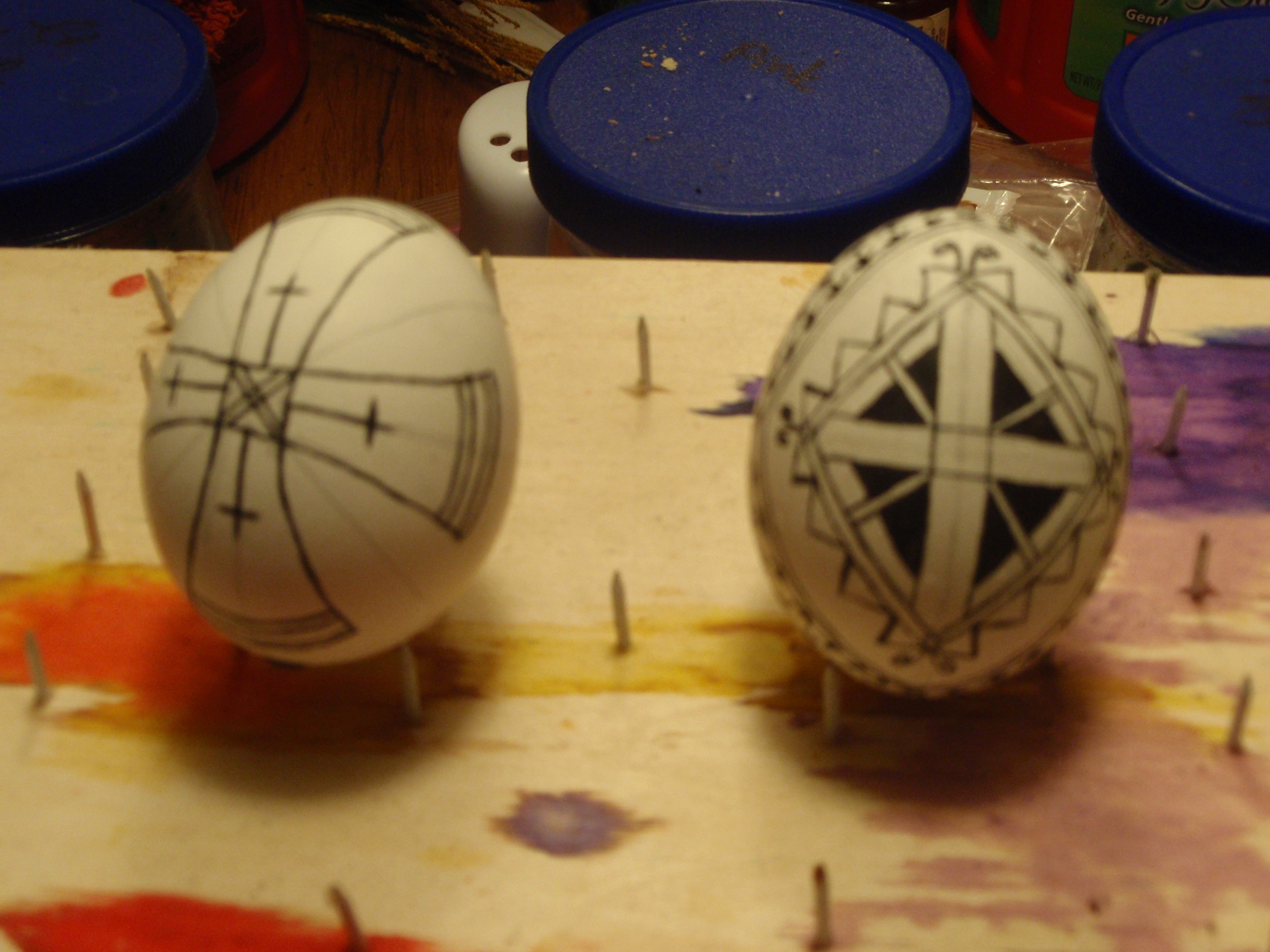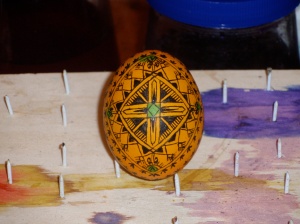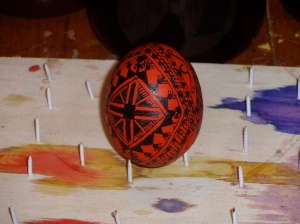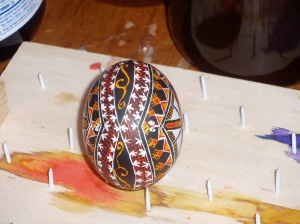I took pictures between colors so that you could see the process better. This one shows the waxed lines that will end up being the white ones. See how it's counter-intuitive when you're making them? The one on the left is Rachel's. Again, sorry for the blurriness, it apparently focused on the crumbs on the lid.

The extra lines in the next one shows what will stay gold. The gold that you see in this picture will not stay that way. I also dabbed in some green with a Q-tip because the next layer of red will not be as bright if I were to dye the whole thing green. I could dip the egg in "orange wash", which is just orange without vinegar, to get rid of the green, but since the green will be so small, it's easier just to dab the few spots.

I didn't take an extra picture after I blocked in the green. This next one shows the extra lines and shaded parts that will stay red.

Then it's ready to be dipped in the black. You can kind of distinguish between the black dye and the black wax in this shot. The wax turns black, btw, because of the carbon changes when it's heated on the stylus. The one on the left is Rachel's finished egg, which was dipped in watered down light blue, full strength light blue, and royal blue.

And the finished egg, except for varnish.


I am not the most geometrically correct pysanki person. It is hard to draw straight lines on a curved surface, and you can't use a straight edge. My kids however are much better at line control than me. Mercifully, somehow the colors make the imperfections not so devastating. I've always been an impressionist anyway. And usually I like to make more organic pysanki of flowers, leaves and such. So far this year I've been practicing more on basic lines, but I'll probably get back to the flowers soon.
Another note on dyes. Our first year we did not buy the packaged dyes, but made our own. Traditionally in Eastern Europe, people would make dyes out of the plants that grew in their region, so each region's pysanki took on a local character in both color and design. We made brown dye out of coffee and blue dye out of blueberries. However, neither the coffee nor the blueberries were grown anywhere near my area. I don't think I have pictures of those eggs which were sold at our Church's annual spring Pysanki sale. You can click on the link for details about this year's sale.
I should have begun by sharing the history of Pysanki, which is mostly a Ukrainian and Carpatho-Russian tradition, and the nature of the symbols used. This site has most of the explanations I've heard about Mary Magdalene and about an egg representing the Resurrection. It also includes this description of how ancient pagan symbols were "baptized" when Christianity reached the region,
There is a whole vocabulary of the symbols which are used to decorate the eggs. Many of the symbols are universal, drawn from nature: the sun and stars, flowers and fruits, leaves and trees, animals, birds and fish. Sometimes the pagan meaning is simply carried over to the Christian use of the symbol, and sometimes a new layer of meaning is added. A fish is an ancient symbol of health and also a symbol of Christ himself. A pine tree represents youth and health, as well as the Christian hope of eternal life. A rooster is a symbol of fertility, and also a reminder of the cock that crowed when Peter denied his Lord. Geometrical symbols are also popular: a triangle represents the human family--father, mother, and child--as well as the Holy Trinity. An egg with forty triangles represents the forty days of Lent. Specifically Christian symbols such as the cross and a church need no interpretation.
It also has some very nice pictures.
No comments:
Post a Comment